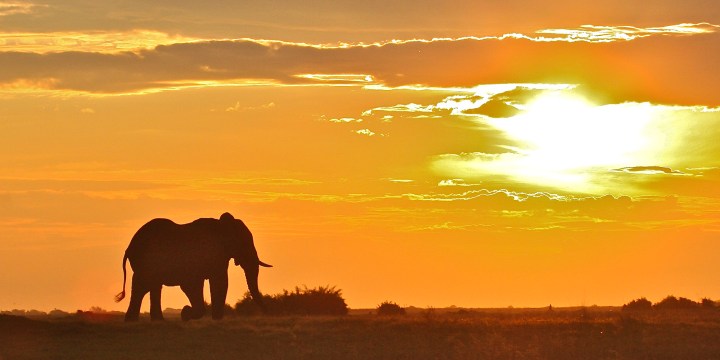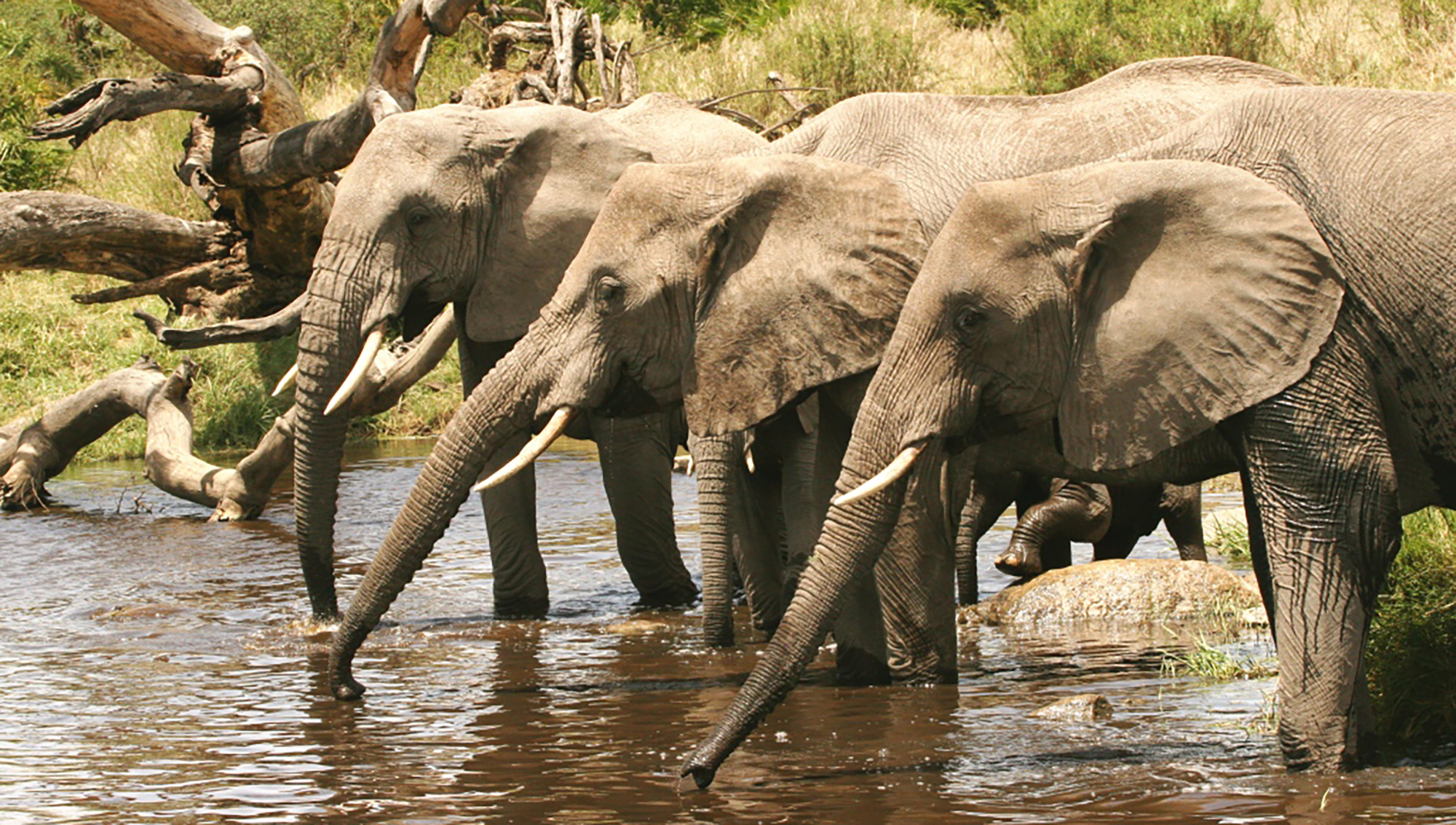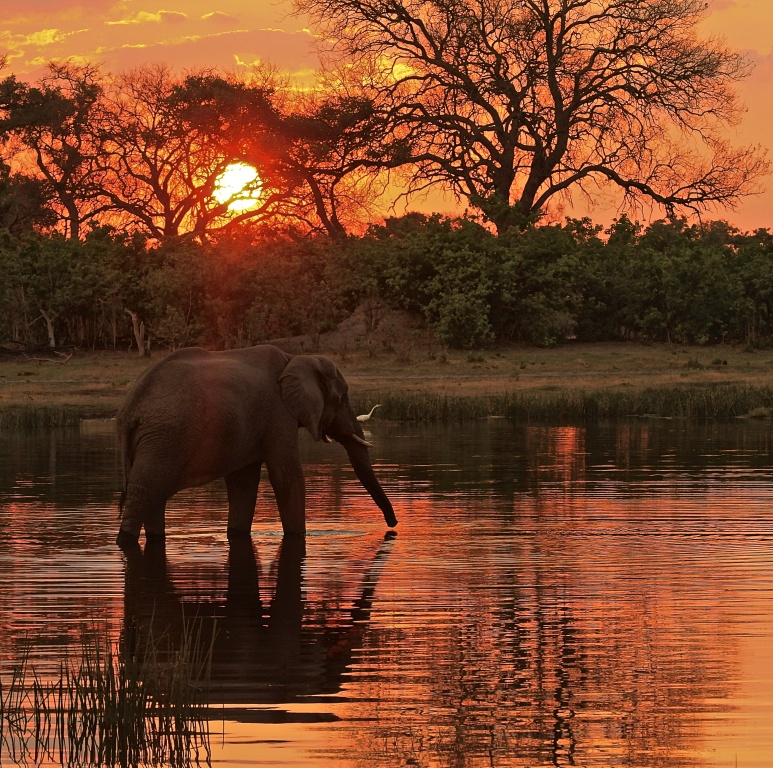ANALYSIS
The myth of too many elephants in Kruger Park, and why culling is redundant

Because of their size and visible effects on vegetation, Kruger Park’s elephants are a highly emotive subject, fuelling acrimonious debates, cries of ‘too many elephants’ and ‘Kruger has an elephant problem’ – followed by demands for ‘unavoidable culling’. The reality is far more complex.
The story of elephant management in Kruger National Park has something in common with the tale of porridge in the paws of three bears: too few, too many and just right.
But let’s get one thing straight right up front: there’s no authoritative or scientifically accepted definition of how many elephants there should be in the park. Nor is there any scientific basis for setting elephant carrying capacity. Because of the absence of historical records, we don’t know if high elephant densities in the park are a “new normal” or an “old natural”.
So the idea of the right number is a moving target, depending on personal opinion formed through experiences, anecdotes, numbers, rates of growth, limited visual impressions and hearsay. Along the way, as numbers have fluctuated, there has been much confusion and pain — especially for the elephants.
Before European hunters arrived with guns, the Lowveld would have rippled with elephants. By the end of the ivory hunting carnage, they had been exterminated. Then, in 1905, one was seen at the confluence of the Olifants and Letaba rivers, probably having moved in from Mozambique.
Kruger National Park become a national park in 1926 and, with protection, elephants drifted back into the area, spreading across the park and doing what elephants have always done: pushing over trees and creating open savanna landscapes with more grasses. In 1938 there were an estimated 400 — and the herds kept growing.
Culling thumb-suck

Elephants have a companionable drink. By 1995, when it ended, 14,629 Kruger Park elephants had been killed. By then, a large abattoir had been built at Skukuza to process the mountains of meat. (Photo: Francis Garrard)
By the 1960s, park management, keen to preserve the park’s pristine state (whatever that means, in an ever-changing biome), decided there were too many elephants and recommended culling. But how many was too many?
The answer appears to have come from a former Kruger Park director, Dr Salomon Joubert, who assessed (a thumb-suck, it turns out) that an optimum number was one elephant per square mile, which meant around 7,000 elephants max — roughly what the park had at the time.
In 1967, as numbers grew, the culling began. By 1995, when it ended, 14,629 elephants had been killed. By then, a large abattoir had been built at Skukuza to process the mountains of meat.
What stopped the slaughter was growing public disgust and a challenge. Dr GA Robinson, then head of SANParks, placed a moratorium on culling and challenged scientists to find a workable alternative. By then, there was a growing global backlash against culling.
Adaptive management plan
What they produced was an adaptive management plan that would provide sufficient evidence to control elephants without shooting them. And it worked.
SANParks shifted from controlling to adaptation, noting the impact of elephants on their environment — how and where they move and use the landscape, the time they spend in those areas, the demographics of the specific elephants and what they’re doing when they’re there.
Instead of managing numbers, policy changed to influencing how elephants used space, using fire, water and fencing off large trees. It was flexible, anticipated surprises and was prepared to re-set objectives as people learnt.
The closure of artificial waterholes across the park has been key to this, as a way of controlling heavy impact near water sources. Increasing distances between waterholes also decreases the survival rate of young and weak individuals — particularly during times of drought — which reduces population growth.
Natural engineers
It was recognised that elephants are also important natural engineers integral to the African landscape. They open up thickets of invasive species, convert bush into grassland for grazers, create habitats for a variety of other species.

Elephants are, in fact, the park’s constant gardeners, essential as seed dispersal agents, able to transport seeds up to 65km from the parent tree. (Photo: Francis Garrard)
During droughts they don’t increase — they simply disperse. It was found that their impact was unrelated to their distribution, but to the movement of bulls, soil types and water.
There have also been shrill complaints that, in pushing over trees, elephants are destroying raptor nesting sites. SANParks research has shown, however, that there is no clear link to the loss of large trees and populations of martial eagles or lappet-faced, white-headed and white-backed vultures.
Constant gardeners
Elephants are, in fact, the park’s constant gardeners, essential as seed dispersal agents, able to transport seeds up to 65km from the parent tree.
Acid in their digestive systems can also help with the seed germination of some plant species, while their dung provides a fertile environment for germination. By felling trees or pulling down branches, they also create “browsing lawns” of reduced height for other herbivores.
What about fears that a runaway elephant population would trash the park? The latest Kruger census (2021) put the number of elephants at 27,998, a figure that, in the 1960s, would have given Dr Joubert apoplexy.
Yet Kruger scientists say they’re not close to resource limitation level in the park, and that the population is lower than the expected ecological benchmark.
Since culling ended, overall elephant population has grown at just 4.1% a year and has not yet reached a point where environmental constraints curtail overall population growth.
Behind the ‘too many elephants’ calls

There are more than 20,000 elephants in Kruger than when culling began in 1967 — but they’re not trashing the place. (Photo: Francis Garrard)
So what’s behind calls of “too many elephants”? Visitors to the park see less than 20% of the area from the tar and sand roads. These largely weave along waterholes and rivers where wildlife viewing is best, but where elephant impact is highest.
Roads can also increase encounter rates between elephants, trees and tourists because elephant bulls tend to favour them. So a downed tree at a waterhole or along a road does not represent a flattened forest in the park.
Science backs this up. The latest research found that there has been no decrease in heterogeneity — the variety of species — within the Greater Kruger region and trends are stable.
There are more than 20,000 elephants in Kruger than when culling began in 1967 — but they’re not trashing the place. As a result, SANParks does not have a plan to cull elephants.
There are many other reasons why culling is off the table. There is no scientific justification; it would require extensive prior scientific evaluation and public participation; it has been discredited for scientific, ethical and moral reasons; it would cause a tourist backlash; proposals to cull would attract immediate litigation and, according to a recent paper by Prof Rob Slotow at the University of KwaZulu-Natal, is most likely illegal.
For all these reasons, Kruger has no culling plan and nor is any such plan in preparation.
In answer to questions about whether Kruger has too many elephants ruining the park, the answer is simply: No, it doesn’t.
The numbers today, to invoke the metaphor of the three bears, are “just right”. DM/OBP
[hearken id=”daily-maverick/9419″]



















 Become an Insider
Become an Insider
Regarding the Dr Salomon Joubert 7000 “thumb-suck”: from 1964-67 he was a Section Ranger at a remote border post, then he studied the social behavior of the Park’s roan antelopes for his Master of Science degree (1967-70). He was appointed Kruger Park’s director only much later in 1987.
In the 1960s he wasn’t a director (or in any management position) and he didn’t even study elephants. So, where did you get the idea that this man thumb-sucked a very important number and influenced the Park’s elephant management program for decades?